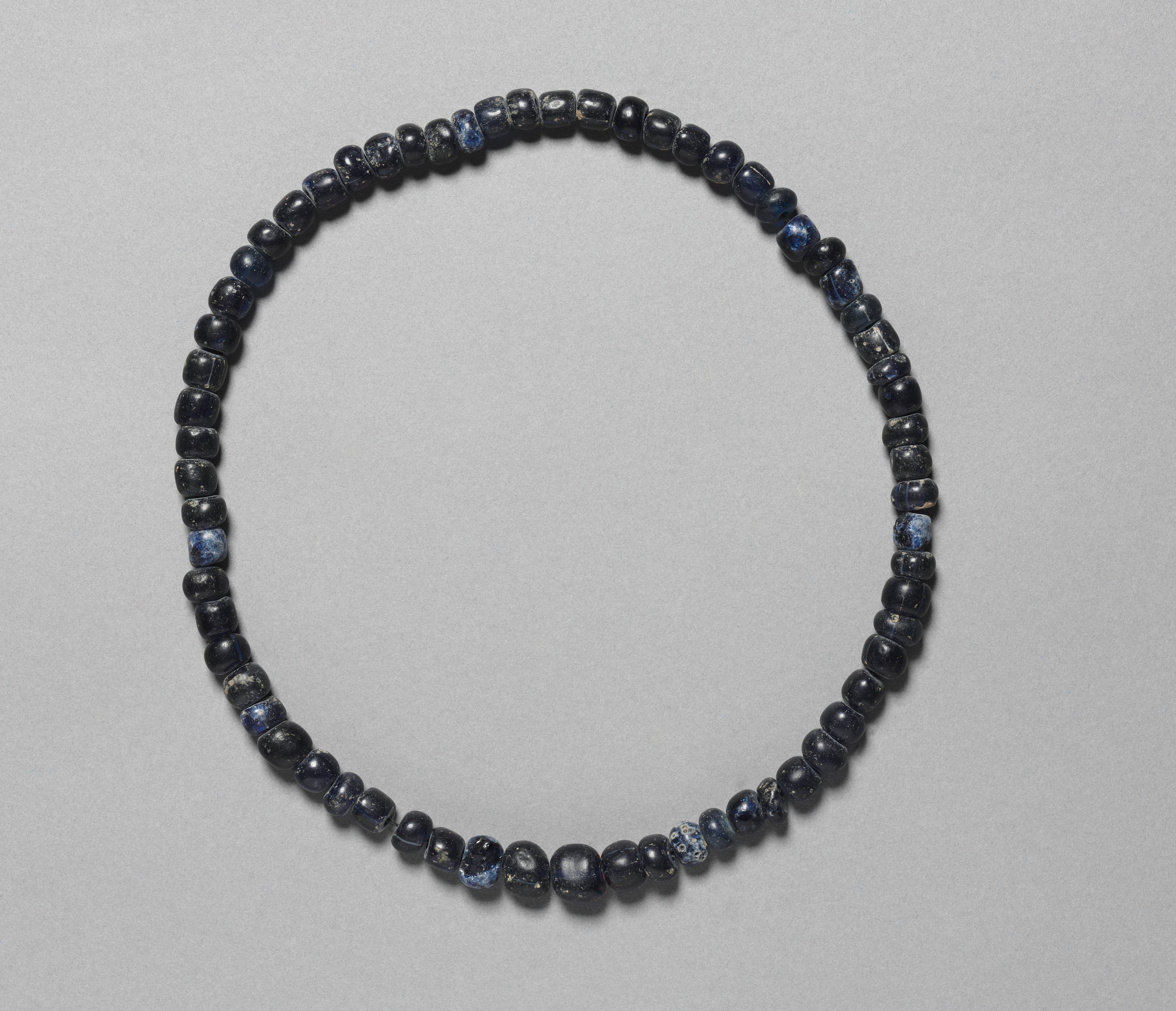The Cleveland Museum of Art
Collection Online as of April 19, 2024

String of Glass Beads
400s CE
(57 BCE–668 CE)
Location: 236 Korean
Did You Know?
Glass, largely produced in ancient Rome since the late 1st century, also reached the Korean peninsula through the Silk Road, the ancient global trade route. The Silla people started to produce native soda glass as early as the 2nd century.Description
An enormous amount of beaded strings and necklaces were excavated from Silla tomb sites. Glass, largely produced in ancient Rome since the late 1st century, also reached the Korean peninsula through the Silk Road, the ancient global trade route. Yet the cobalt blue glass beads shown in this string are highly likely to be soda glass produced in the Silla territory.- ?-1917(Yamanaka and Company, New York, NY, sold to the Cleveland Museum of Art)1917-The Cleveland Museum of Art, Cleveland, OH
- Golden Splendors: the Royal Tomb of Silla Hwangnamdaechong [황남대총: 황금의나라신라의왕릉]. Seoul: National Museum of Korea, 2010.Lee, Soyoung, and Denise Patry Leidy. Silla: Korea's Golden Kingdom. New York: The Metropolitan Museum of Art, 2013.Park, Jun-young. “Characteristic and Development Ancient Glass Beads in Korea [韓國 古代 琉璃구슬의 特徵과 展開樣相].” Jungang gogo yeogu 19 (2016): 71-109. www.dbpia.co.krKim, Kyu-ho. “Guseul min yuri jangsinguseoui daeoegyoryu [구슬 및 유리 장신구서의 대외교류].” Korean Traditional Costume Research Institute 8. (2018): 97-108. www.dbpia.co.krNelson, Sarah. Gyeongju: The Capital of Golden Silla. Routledge, 2019.
- Interpretation of Materiality: Gold (Korean art rotation). The Cleveland Museum of Art, Cleveland, OH (organizer) (April 29-October 24, 2021).The Other Side of the Story - Korean Gallery 236 Rotation. The Cleveland Museum of Art (organizer) (October 27, 2020-April 25, 2021).
- {{cite web|title=String of Glass Beads|url=false|author=|year=400s CE|access-date=19 April 2024|publisher=Cleveland Museum of Art}}
Source URL:
https://www.clevelandart.org/art/1917.1059